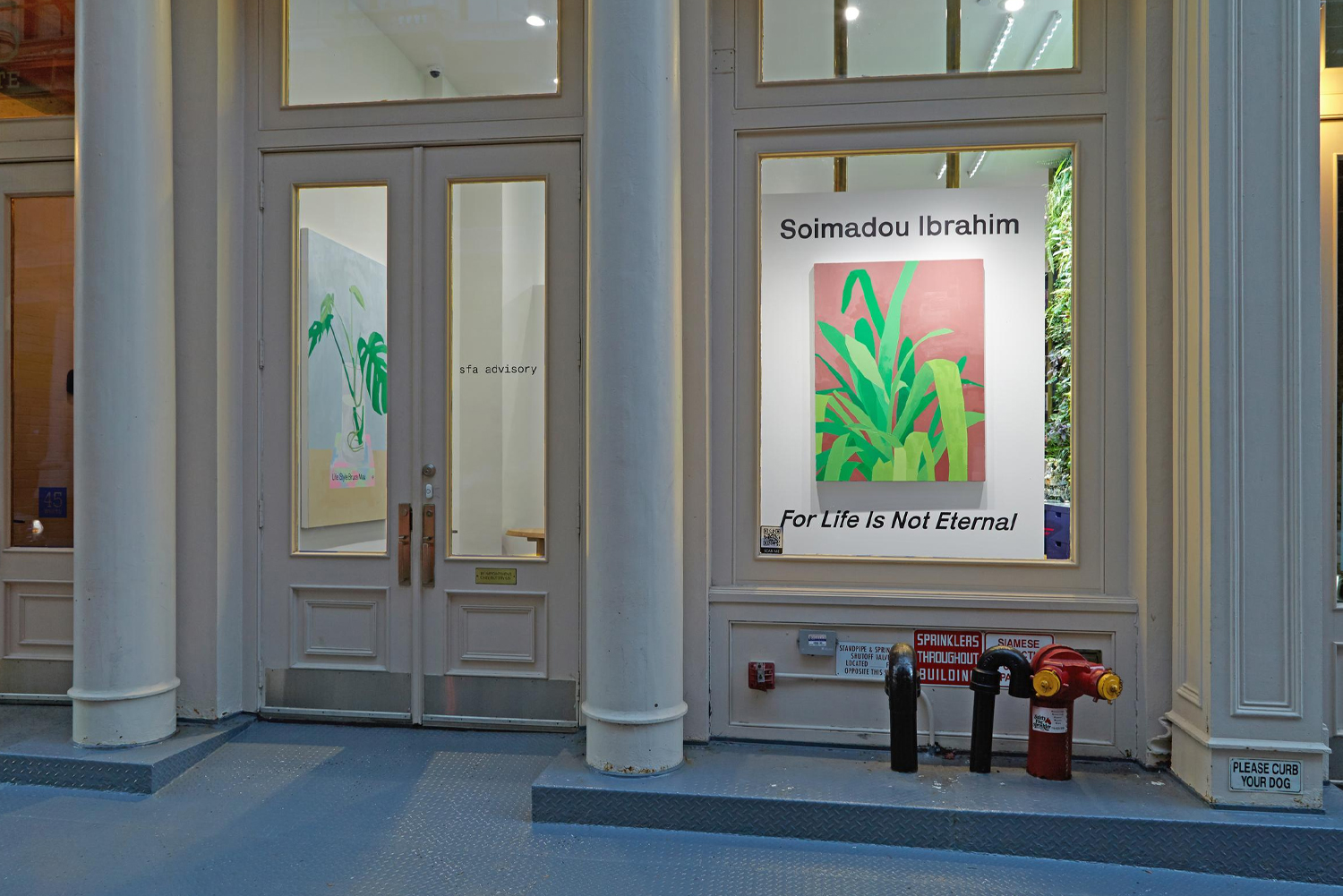
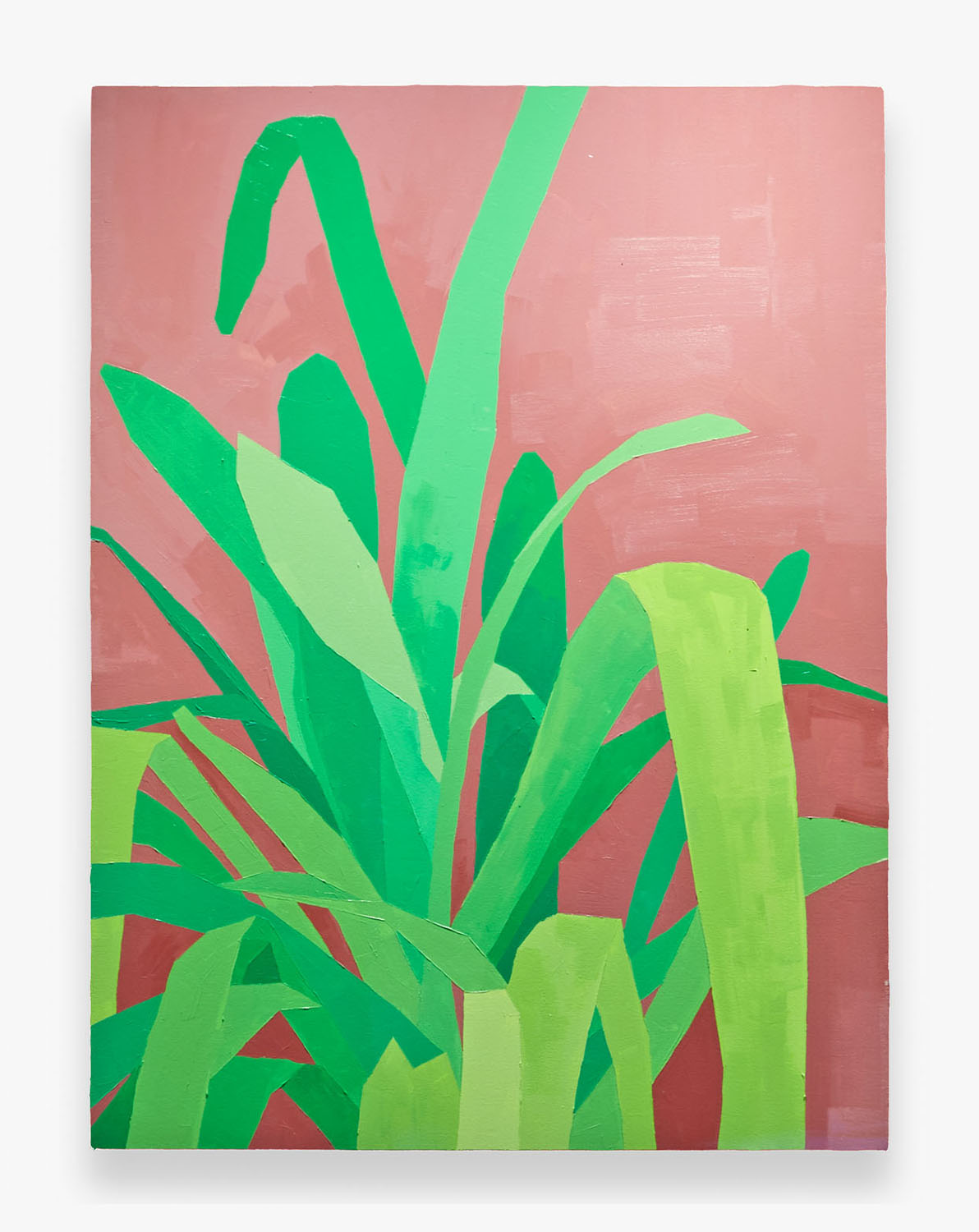
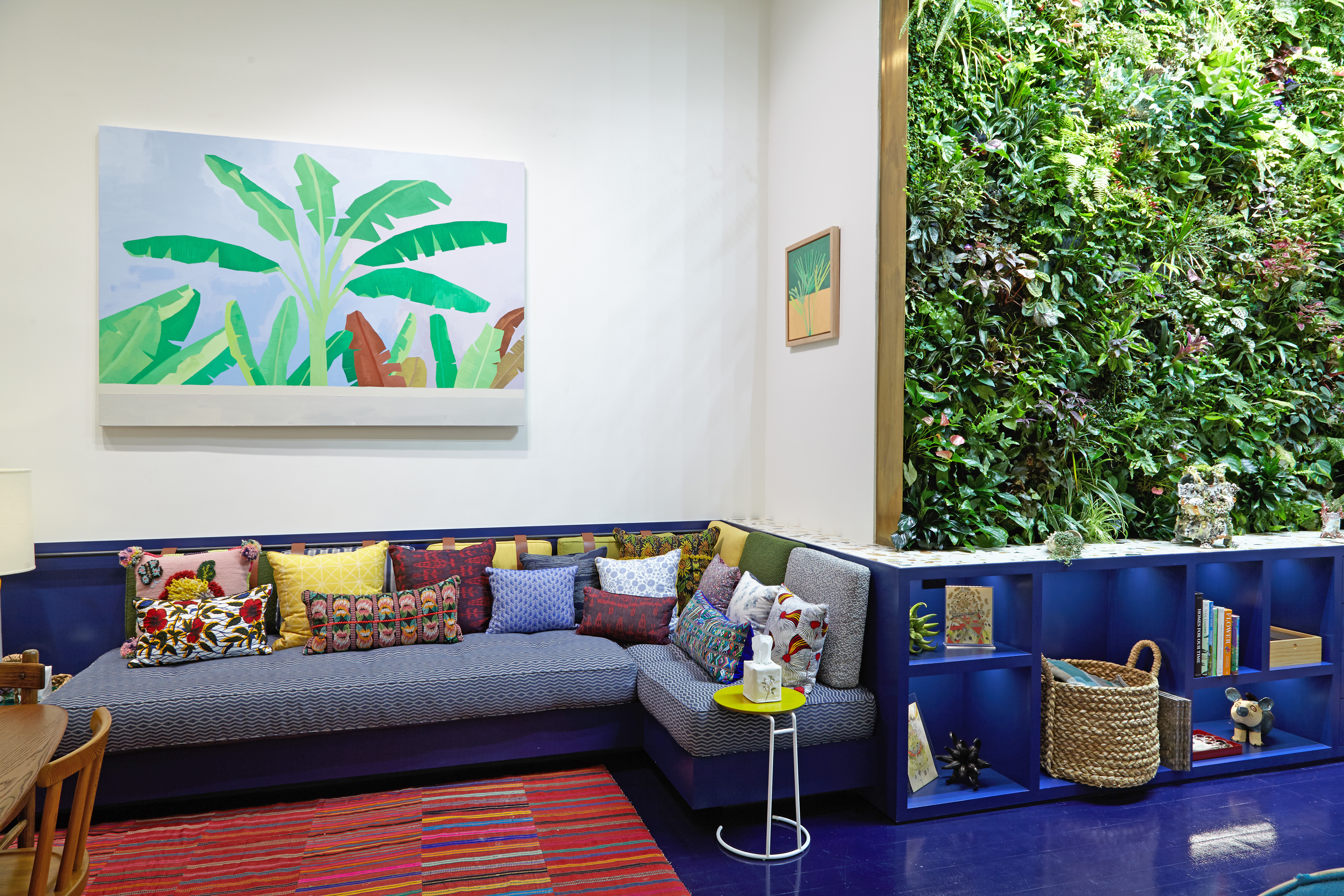
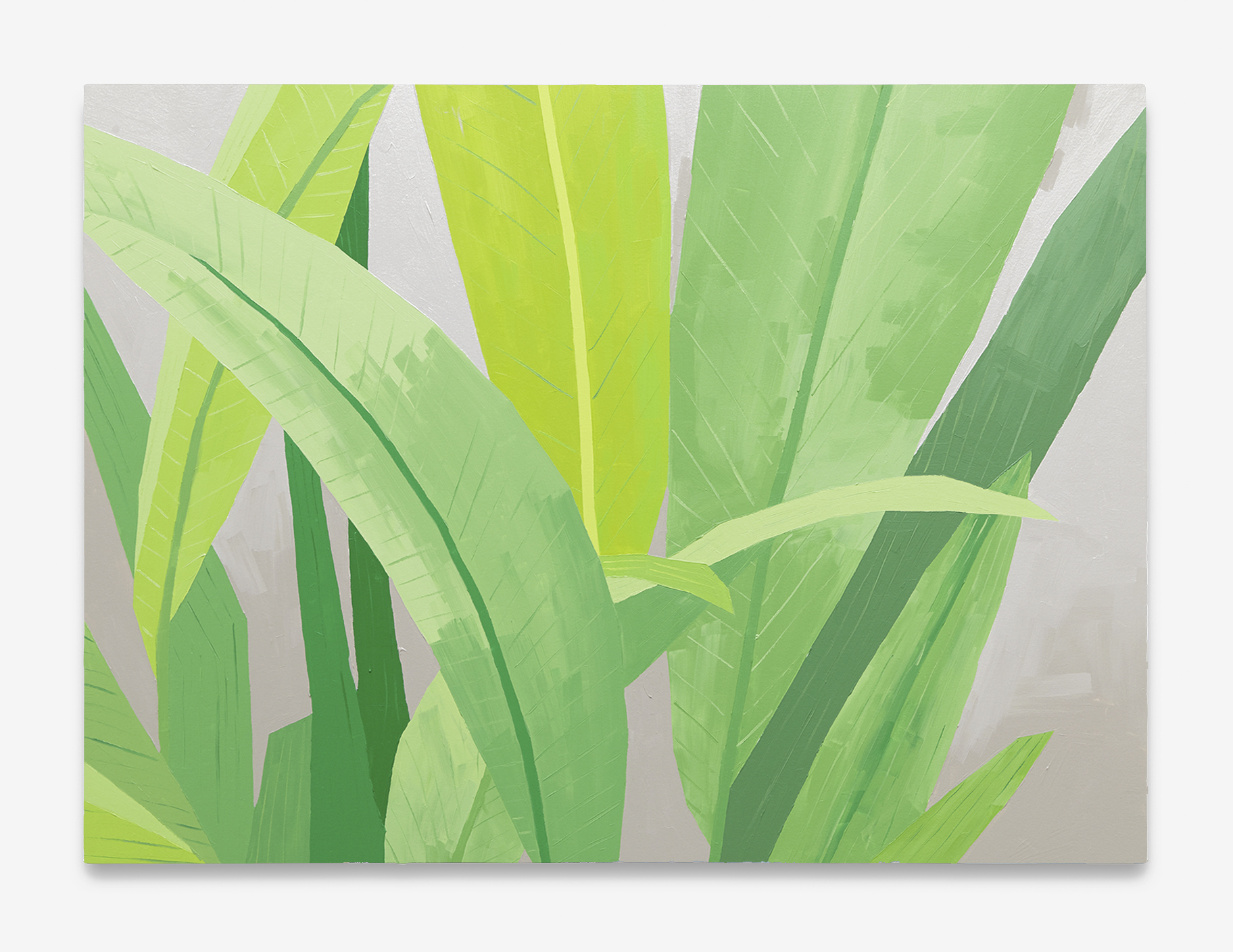
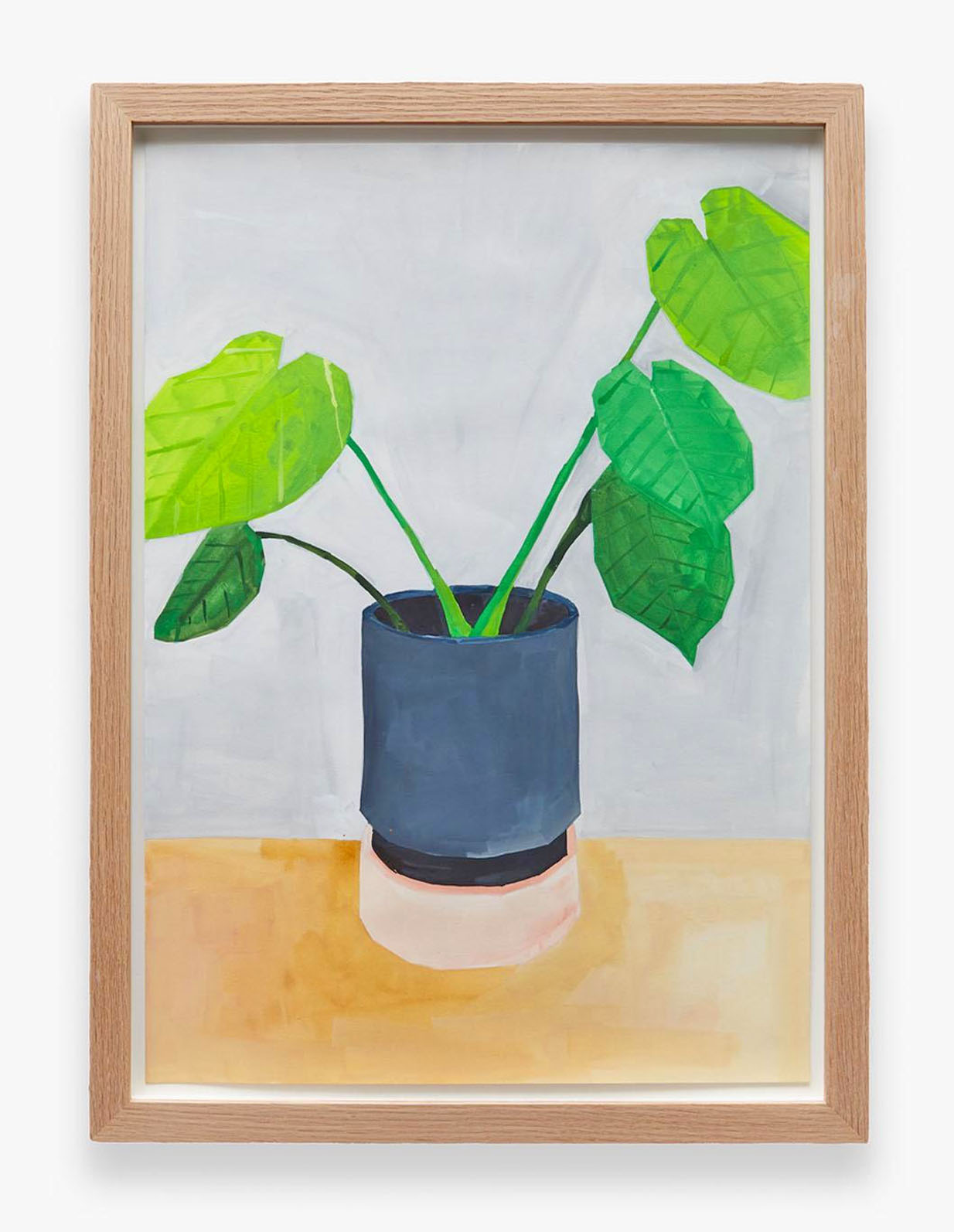




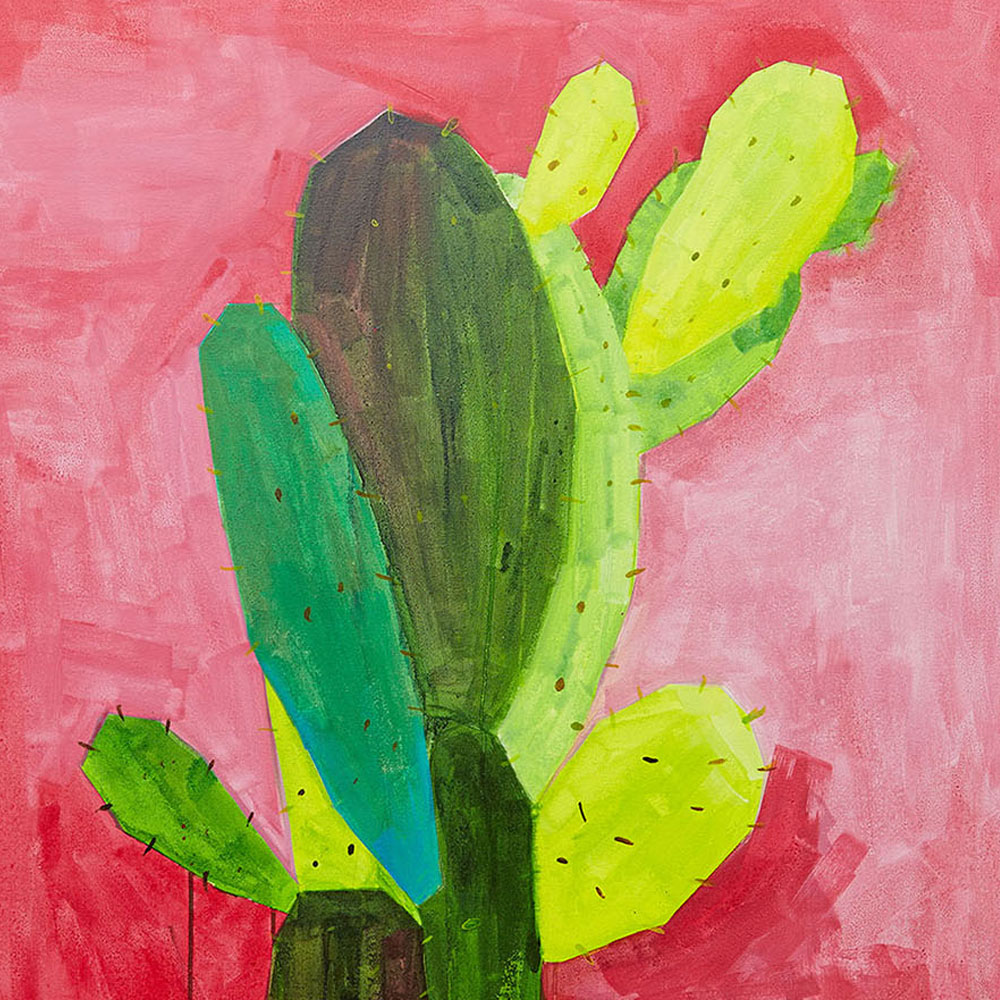

For life is not eternal
SFA Advisory, New York, US
November 19 – December 17, 2021
For Life is Not Eternal, marks a departure for French-Comorian, London-based artist Soimadou Ibrahim, who forgoes his typical imagery of familial characters painted from memories or photographs in exchange for imagery of flora in isolation. Vegetation has always accompanied his iconic figures in paintings but never have they entirely stood alone. Formally he gives humans and plants equal weight, using vibrant colors and choppy, thick brushstrokes to render both. Here, however, flora no longer serves as backdrop, instead taking center-stage and acting as stand-ins for his family, his memories, and his Comorian heritage. Plants, and in particular the Musa species (Banana trees), are the one constant for the artist; they are the thread that connects him back to his communal roots, anchoring the perpetual state of movement, both physical and psychological, that he occupies as a child of the diaspora.
Diaspora, in general, indicates the voluntary or forced dispersal of individuals from their homeland to various locations – in this instance, a voluntary move to Europe and, more specifically, France and the UK. Ibrahim is part of what is referred to as the contemporary African Diaspora, which resulted from territorial rebellions against colonial oppression and the subsequent struggles that often accompany post-colonial autonomy and Independence. Comoros was ultimately subjected to colonization by France in the 19th century resulting in a century’s-long exploitation of its land, primarily to cultivate the Ylang Ylang scent. Finally, in 1975, all but one of the 4 islands comprising this archipelago separated from France, which, although a victory, left the country more impoverished than it was before.
Remarkedly, while a diaspora is created out of movement from the original dispersal from a homeland, it is oftentimes affirmed by another movement, an engagement with the homeland. Ibrahim’s life-long engagement with Comoros manifests through recurring painted depictions, photographs, as well as the physical presence of plants around him. Plants, especially Musa, have become a marker of the artist’s recurring impulse to reconnect.
Musa occupies a special place in his artwork. Its significance derives not just from its omnipresence in this particular archipelago but also as a member of its own Banana diaspora. Since the 6thcentury, Comoros has been a host to peoples crossing the seas from the East, such as the Bantu, Austronesians, Arabs, Somalis, and Indians. Concurrently, the Musa plant has been carried from its Asian origins westward by those same peoples. Just as the identity of the Comorian people is an amalgamation of various waves of migrations, the Musa identity too is an amalgamation of continuous genomic mutations on its journey from the East. Identity in such island territories is already confounded but eventually fuses into a tribal hybrid. The ubiquitous Musa plants, which were not native to Comoros and which did not provide significant income, must be like a familiar ancestral sibling or the backdrop that is always there, offering a commonality to share with its inhabitants and those dispersed.
Interestingly the title Ibrahim chose for this exhibition, For Life is Not Eternal, evokes a nostalgic mood that often accompanies the loss of life; and it is that same nostalgia that might be said to define the diasporic condition in and of itself. Although the artist has painted his plants as existing mostly in solitude and isolation, themselves seeming to be lost, they are painted with a certain monumental vibrancy and with a confident recurring brushstroke that cauterizes any flow, concretizing the impermanent, and paying homage to a certain universal condition of movement.